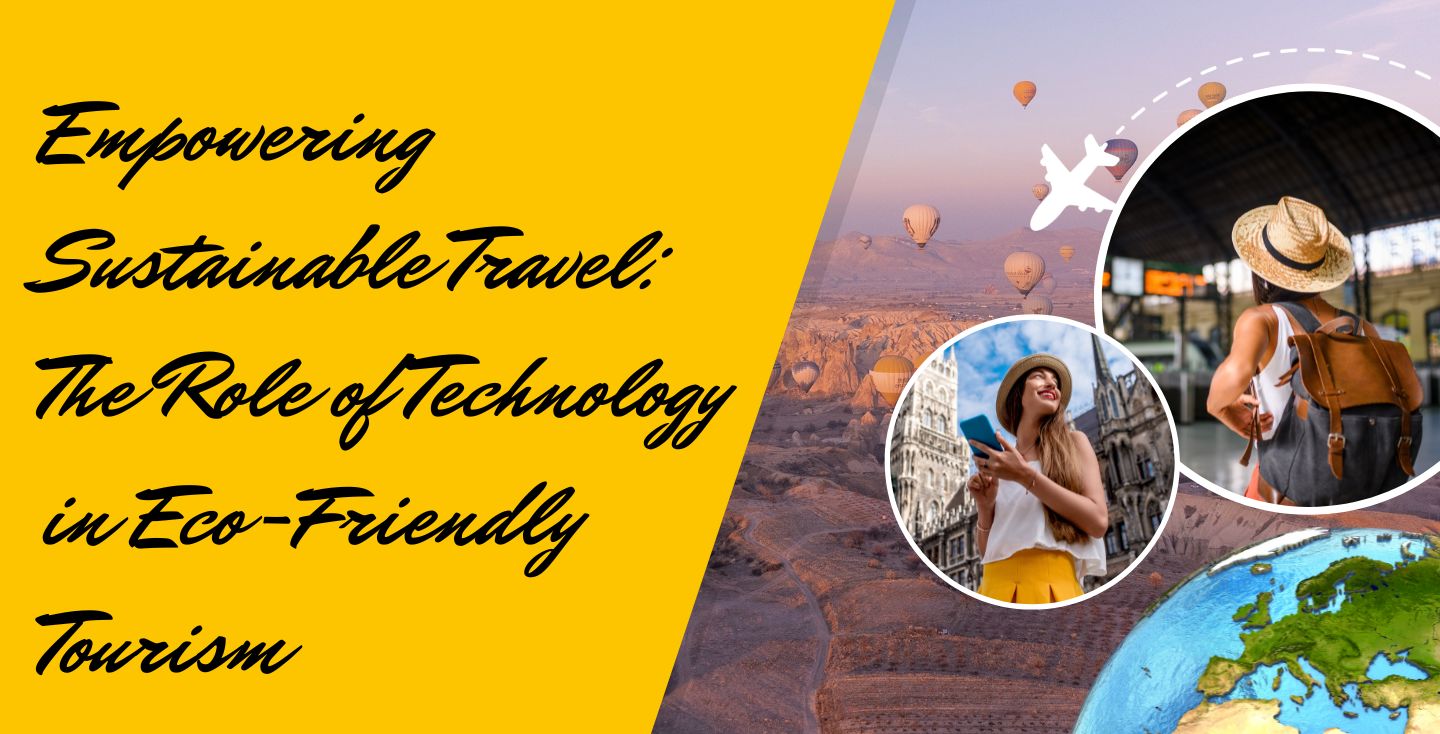The travel industry has seen a notable transition towards sustainability in recent times, mostly due to growing consciousness regarding the ecological consequences of travel. Nowadays, tourists are more aware of their environmental impact, which has led to the incorporation of technology to promote environmentally beneficial behaviors. This article explores the various ways that technology might facilitate sustainable travel, from initial travel planning to experiences on the ground and beyond.
Travel Technology Solutions: Enhancing Your Travel Journey with Advanced Technology SolutionsI. Sustainable Travel: A Necessity in the Modern World
Understanding the Impact of Tourism on the Environment is crucial. The Carbon Footprint of Travel encompasses transportation and accommodation-related emissions, necessitating strategies to mitigate them. Simultaneously, Environmental Degradation, exacerbated by over-tourism, poses threats to natural habitats, demanding preservation efforts. Recognizing the Need for Sustainable Tourism involves understanding social and cultural implications, appreciating the economic benefits of sustainability, and acknowledging the impact of responsible consumer choices.
II. Technology in Sustainable Trip Planning
Artificial Intelligence and Machine Learning have revolutionized trip planning by enabling smart itineraries, predictive analytics for crowd management, and recommender systems for eco-friendly accommodations and activities. Blockchain Technology ensures transparency in supply chains, fair wages, and ethical practices, while also promoting responsible tourism through verified information. Virtual Reality (VR) and Augmented Reality (AR) provide immersive alternatives, reducing the necessity for physical travel.
III. Eco-Friendly Transportation Solutions
The adoption of Electric Vehicles (EVs) is instrumental in reducing transportation-related carbon emissions. Sustainable Aviation Technologies, such as biofuels and innovative aircraft designs, contribute to making air travel more eco-friendly. High-Speed Rail and Sustainable Ground Transportation are alternatives that reduce the overall environmental impact of long-distance travel, integrating seamlessly with local public transportation systems.
IV. Smart Accommodations and Green Infrastructure
Energy-Efficient Hotels are implementing renewable energy sources, smart room controls for energy conservation, and certification programs for eco-friendly accommodations. Sustainable Construction and Architecture emphasize green building materials, integration of nature into urban spaces, and the importance of LEED certification in the hospitality industry. Waste Reduction and Recycling Initiatives in hotels aim to minimize single-use plastics, implement recycling programs, and engage guests in waste reduction efforts.
V. The Role of Mobile Apps in Sustainable Travel
Sustainable Dining Apps assist in locating eco-friendly and locally sourced restaurants, allowing dietary preference customization and reducing food waste through smart ordering. Eco-Friendly Activity Apps connect travelers with responsible activities and local communities, promoting wildlife conservation through interactive experiences. Carbon Offset Apps calculate and offset travel-related carbon emissions, supporting environmental projects and seamlessly integrating with travel booking platforms.
VI. Community Engagement and Responsible Tourism
Social Media and Sustainable Tourism Advocacy leverage influencer campaigns and user-generated content to promote responsible travel and foster community dialogue on eco-friendly practices. Community-Based Tourism Platforms empower local communities through tourism, ensuring fair compensation for community-hosted experiences and preserving cultural heritage. Volunteer Tourism (Voluntourism) Platforms connect travelers with meaningful volunteer opportunities, emphasizing ethical practices and assessing the impact of voluntourism on sustainable development.
VII. Overcoming Challenges and Embracing Innovation
Despite the promising role of technology in fostering sustainable travel, challenges remain. These include the need for widespread adoption, addressing technological disparities across regions, and ensuring that advancements do not inadvertently harm local economies or cultures. However, overcoming these challenges is crucial for the continued innovation in the field.
A. Widespread Adoption
For technology to truly revolutionize sustainable travel, it must be embraced on a global scale. Governments, businesses, and individuals need to work collaboratively to encourage the widespread adoption of eco-friendly practices and technologies. This may involve implementing policies that incentivize sustainable choices, fostering public awareness campaigns, and investing in the infrastructure necessary for these technologies to thrive.
B. Addressing Disparities
It’s essential to acknowledge and address technological disparities that exist between different regions and communities. While some areas may readily adopt and benefit from sustainable travel technologies, others may face challenges due to limited access to resources or information. Bridging this gap requires inclusive strategies that consider the unique needs and constraints of various communities, ensuring that the benefits of sustainable travel are accessible to all.
C. Balancing Innovation with Local Sensitivity
As technology continues to evolve, it’s crucial to strike a balance between innovation and respect for local cultures and economies. Overly rapid technological advancements can sometimes lead to unintended consequences, such as the displacement of traditional practices or the exploitation of local resources. Sustainable travel technologies should be designed and implemented with a deep understanding of the local context, promoting responsible innovation that enhances rather than disrupts communities.
VIII. Future Trends and Emerging Technologies
Looking ahead, several promising trends and emerging technologies are poised to further shape the landscape of sustainable travel.
A. Circular Tourism Economy
The concept of a circular tourism economy is gaining traction, emphasizing a regenerative approach to travel. This involves minimizing waste, promoting recycling, and ensuring that resources are used efficiently. Circular tourism aims to create a closed-loop system, where the impact of travel is mitigated through sustainable practices, from accommodation to transportation and beyond.
B. Artificial Intelligence for Conservation
Advancements in artificial intelligence are increasingly being leveraged for wildlife conservation. AI-powered tools can monitor and protect endangered species, track illegal activities such as poaching, and contribute to the overall preservation of biodiversity in travel destinations. These innovations underscore the potential of technology not only to minimize harm but actively contribute to environmental conservation.
C. Sustainable Aviation Innovations
The aviation industry is witnessing continuous innovations towards sustainability. From the development of electric aircraft to exploring alternative fuel sources, efforts are underway to make air travel more eco-friendly. These advancements, coupled with increased awareness and advocacy for sustainable aviation practices, signal a positive trajectory for the industry.
Conclusion
As the travel industry grapples with sustainability challenges, technology emerges as a powerful catalyst for positive change. From intelligent trip planning to eco-friendly transportation, smart accommodations, and community engagement, technology reshapes the future of global travel. The growing emphasis on responsible choices and the integration of technological advancements offer a promising trajectory towards a more sustainable and environmentally conscious travel landscape. Embracing these innovations enables individuals and businesses to contribute actively to the evolution of a greener travel industry.








